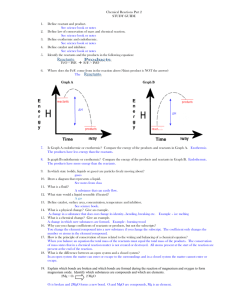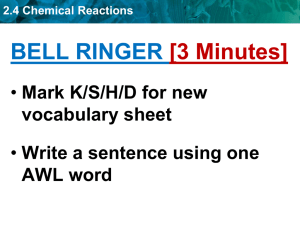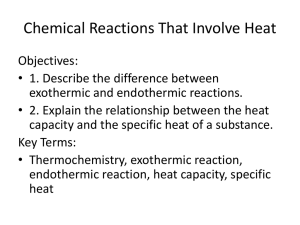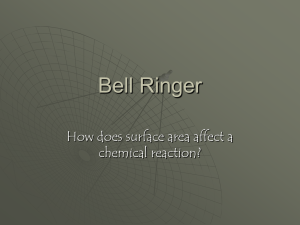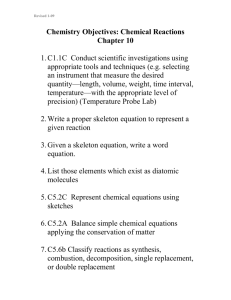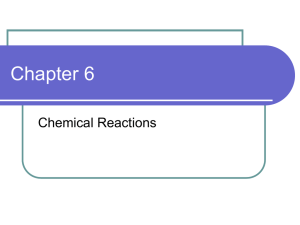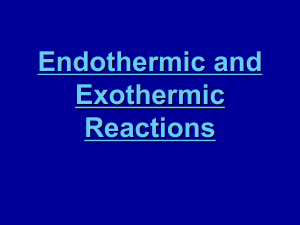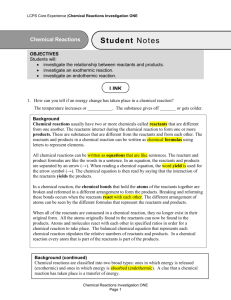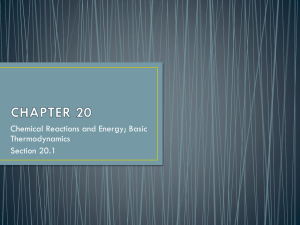Chemical Reactions: Properties, Balancing, and Energy
advertisement
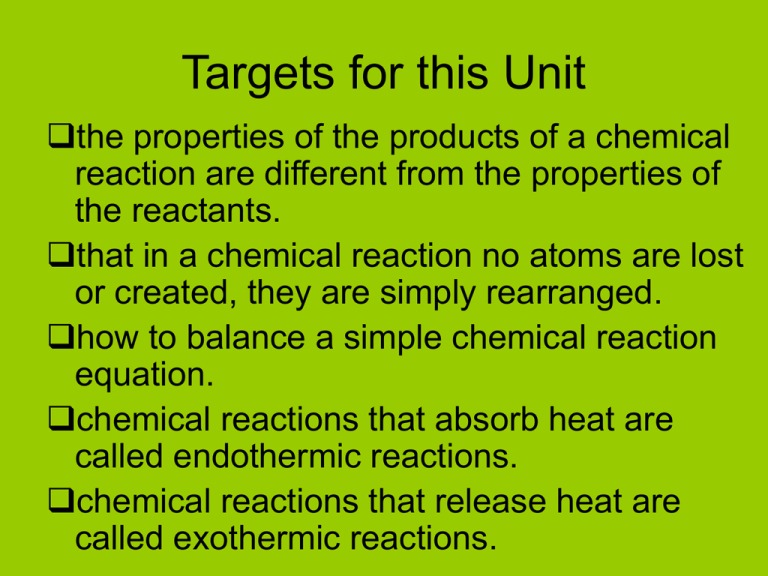
Targets for this Unit the properties of the products of a chemical reaction are different from the properties of the reactants. that in a chemical reaction no atoms are lost or created, they are simply rearranged. how to balance a simple chemical reaction equation. chemical reactions that absorb heat are called endothermic reactions. chemical reactions that release heat are called exothermic reactions. Observing Chemical Change Chapter 6.1 Page 214 • What happens during a chemical reaction? • Suppose you fill a sealable bag with ice cubes, and you allow the ice to melt. How would the mass of the bag and ice before melting compare to the mass of the water and the bag after melting? Explain your answer. Section 1: Observing Chemical Change How can changes in matter be described? How can you tell when a chemical reaction occurs? Review • Matter --- anything that has mass and takes up space • Chemistry --- the study of matter and how it changes • Changes in matter come in two forms: physical changes and chemical changes Properties and Changes in Matter • Matter can undergo both physical change and chemical change. Chemical change involves both reactants and products Marshmallow + oxygen carbon (ash) + water (vapor) + carbon dioxide C16H22O11 + 2 O2 reactants 7 C2 + 11 H2O + 2 CO2 products Reactants are the compounds you begin with in a chemical reaction. Products are the compounds produced in a chemical reaction. Properties and Changes in Matter • Chemical changes occur when bonds break and new bonds form. Reactants Products Evidence for Chemical Reactions Chemical reactions involve changes in properties and changes in energy that you can observe. 1. Changes in properties 2. Changes in energy 1. Changes in Properties • Physical change – Color – Precipitate - Gas - Texture • Chemical change – When two or more reactants chemically combine to form new products, the chemical properties of the products are different from the properties of the reactants. 2. Changes in Energy Chemical reactions usually absorb heat or release heat. When a reaction absorbs heat it is called an endothermic reaction. In an endothermic reaction, the products are cooler than the reactants, because the reaction absorbs heat from the reactants. 2. Changes in Energy Chemical reactions usually absorb heat or release heat. When a reaction releases heat it is called an exothermic reaction. In an exothermic reaction, the products are warmer than the reactants, because the reaction releases heat to the reactants. Energy in Chemical Changes •A student places two substances in a flask and measures the temperature once per minute while the substances react. The student plots the time and temperature data and creates the graph at left. Energy in Chemical Changes • Reading Graphs: – What was the temperature in the flask at 3 minutes? When was the first time the temperature was at 6ºC? –At 3 minutes the temperature in the flask was about 30ºC. The first time the temperature was 6ºC was at about 7 minutes. Energy in Chemical Changes • Calculating: – How many degrees did the temperature drop between 2 minutes and 5 minutes? –About 20ºC Energy in Chemical Changes • Interpreting Data: – Is the reaction endothermic or exothermic? Explain. –The reaction was endothermic, because it absorbed thermal energy from the reaction mixture, causing the temperature to drop. Energy in Chemical Changes • Inferring: – At what temperature did the reaction stop? How can you tell? –The reaction stopped at about 2ºC. You can tell because that is the lowest temperature reached. Energy in Chemical Changes • Drawing Conclusions: Suppose the temperature in the flask increased instead of decreased as the reaction occurred. In terms of energy, what kind of reaction would it be? If the temperature increased instead, the reaction would be exothermic, because an exothermic reaction is one in which energy is released. Links on Chemical Changes • Click the SciLinks button for links on chemical changes. End of Section: Observing Chemical Change Do Cornell Notes for Chapter 6, Section 1

